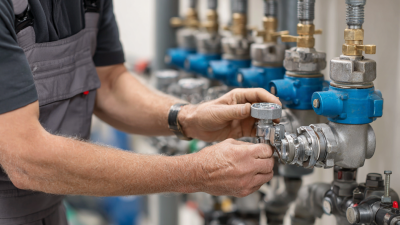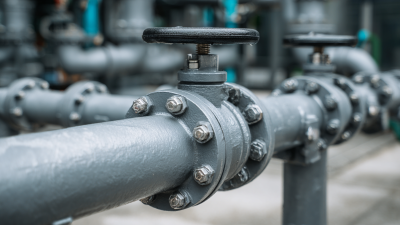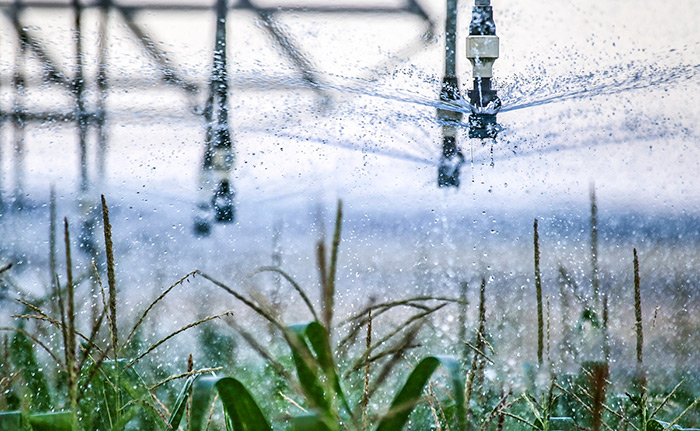Understanding PVC Valve Socket Sizes: Impact on Flow Rates and System Efficiency in Plumbing
Table of Contents
- Understanding PVC Valve Socket Sizes and Their Impact on Plumbing Efficiency
- Key Factors Influencing Flow Rates in PVC Systems
- How Socket Size Affects Pressure and Performance in Plumbing
- Tips for Choosing the Right PVC Valve Socket Size for Your Project
- Common Mistakes to Avoid When Selecting PVC Socket Sizes
- Maintenance Tips to Maximize Efficiency of PVC Valve Systems
- 2022 Market Insights: Impact of Control Valves on UPVC & PVC Ball Valves Demand in China's Valve Industry
- FAQS
- Conclusion
- Related Posts
Hey, when you’re diving into plumbing, getting a good handle on PVC valve sockets is pretty important — it can really make a difference in how well your system works. These sockets come in all sorts of sizes, and choosing the right one can totally impact how smoothly everything flows and how long your setup lasts. At Ningbo Pntek Technology Co., Ltd., we've been in the game for over ten years, exporting plastic pipes, fittings, and valves. We totally get how critical it is to pick the correct PVC valve socket size for whatever project you’re working on. Doing so not only ensures water flows like it should but also helps keep your plumbing in good shape over time. So, in this little intro, we’re hoping to give you some clear insights into how different PVC socket sizes affect your system’s performance — whether you’re a pro or just a DIY hobbyist, we want to help you make smarter choices.

Understanding PVC Valve Socket Sizes and Their Impact on Plumbing Efficiency
When you're dealing with plumbing, getting a good grip on PVC valve socket sizes is kinda essential. It’s one of those small details that can really make a difference in how smoothly everything flows and how well your whole system runs. If the socket sizes aren’t quite right, you might end up with more turbulence and less efficient flow, which can mess with the overall performance. So, fun fact—industry folks say choosing the correct valve size can boost flow rates by up to 30%. That means you end up saving energy too, and your plumbing setup just works better overall.
And here’s the exciting part—latest tech like the new wave of cone check valves are making things safer and simpler without sacrificing efficiency. These newer designs really show why picking the right socket size, along with the valve itself, is so important for top-notch performance. For example, some valves with bigger socket sizes help reduce clogging and let the water flow more smoothly, a big plus when you’re dealing with high-volume systems. When you match both valve and socket sizes correctly, your plumbing can run way more efficiently, which is great for everyone—less hassle, fewer repairs, and all that good stuff.
Impact of PVC Valve Socket Sizes on Flow Rates
This chart illustrates the relationship between different PVC valve socket sizes and their corresponding flow rates in gallons per minute (GPM). As the size of the valve socket increases, we generally observe an increase in flow rates, which can significantly impact overall system efficiency in plumbing.
Key Factors Influencing Flow Rates in PVC Systems
When you're working on designing PVC plumbing systems, it's pretty important to get a good grasp of what really affects flow rates. Knowing this stuff helps you tweak things for better performance and efficiency. For example, one of the big players here is the size of the PVC valve socket. The Plastic Pipe and Fittings Association (PPFA) points out that larger diameter pipes tend to cut down on resistance, which means water can flow more easily. I mean, moving from a 2-inch to a 3-inch PVC socket can boost flow rates by almost 60%! That’s a pretty big deal, especially if you're working on residential or commercial setups where good water flow is key.
Another thing to keep in mind is how smooth the inside of the pipe is, along with the fittings you use. According to the American Society of Civil Engineers (ASCE), making the internal surface as smooth as possible really helps cut down on friction losses. Basically, a smoother pipe can improve flow efficiency by around 25%, especially when you're dealing with longer runs. And don’t forget about fittings—if they’re not designed or placed carefully, they can cause turbulence and slow things down even more.
So, paying attention to these little details in your design can really pay off. It can lead to lower energy costs and actually make your plumbing last longer without hassle.
How Socket Size Affects Pressure and Performance in Plumbing
When dealing with plumbing systems, the size of the socket on PVC valves really makes a difference—affects both how much pressure the system can handle and how well it performs overall. Getting that socket size just right is super important because it helps keep the flow smooth and efficient. If the socket's too small or too big, you can end up with turbulence, which not only messes with the flow but also causes unnecessary pressure drops across the system. It’s pretty crucial to understand how socket size impacts how everything works together, especially in high-end setups where modern fluids can throw some extra hurdles into the mix.

On top of that, choosing the right socket size plays a big part in how adaptable your system is to different conditions. Especially in more advanced plumbing setups, making sure everything fits well with current fittings is key to keeping things running solid and standing up to tough environments. It’s really important for pros to pick components that tick all the technical boxes but also play nicely with the rest of the system. Companies that specialize in plastic pipes, fittings, and valves are there to help—providing the expertise and quality products needed to keep things reliable and efficient, even when things get tricky.
Tips for Choosing the Right PVC Valve Socket Size for Your Project
When you're picking out the right PVC valve socket size for your plumbing project, there are a few key things to keep in mind—like flow rates and how efficient your system will be. Getting the right size really matters because it helps ensure that fluids flow smoothly without losing pressure, which can make a big difference in how well your whole setup performs. If you go too big or too small with the socket, things can get pretty inefficient and might even mess with your install's effectiveness.
At Ningbo Pntek Technology Co., Ltd., we totally get how important it is to choose the correct PVC valve socket size. With lots of experience in providing top-notch plastic pipes, fittings, and valves, we’re here to help you make smarter decisions tailored to what you actually need. Things like the pipe diameter you're working with, what you're planning to use the system for, and how much flow you need should all influence your choice. When you team up with us, you’ll get expert advice and access to a wide variety of products that can really boost your plumbing system’s efficiency.
Understanding PVC Valve Socket Sizes: Impact on Flow Rates and System Efficiency in Plumbing
| Socket Size (inches) | Flow Rate (GPM) | Pressure Drop (psi) | Recommended Applications |
|---|---|---|---|
| 1/2 | 15 | 2 | Small Fixtures |
| 3/4 | 30 | 3 | Medium Fixtures |
| 1 | 50 | 4 | Irrigation Systems |
| 1-1/4 | 75 | 5 | Commercial Plumbing |
| 1-1/2 | 100 | 6 | Industrial Applications |
Common Mistakes to Avoid When Selecting PVC Socket Sizes
When it comes to plumbing systems, choosing the right PVC valve socket size really matters if you want everything to run smoothly. A lot of folks overlook just how important it is to match diameters properly. According to the American Society of Plumbing Engineers, using sockets that don’t quite fit can cause a whole lot of friction, which might drop your flow rates by as much as 30%. That’s a big deal because not only does the system not perform as well, but it can also make your pumps work overtime, eating up more energy than they should.
And then there’s the mistake of not thinking about what your specific application needs. A report from the International Association of Plumbing and Mechanical Officials points out that going too big with socket sizes can actually cause turbulence and messed-up flow patterns. This can lead to more wear and tear on your system parts, possibly shortening their lifespan. So, it’s super important for plumbers to pick socket sizes that match the project’s demands. When you plan carefully, you can boost efficiency by up to 25%, so taking the time to get this right really pays off.

Maintenance Tips to Maximize Efficiency of PVC Valve Systems
Taking care of your PVC valve systems is super important if you want everything to run smoothly and efficiently. Honestly, regular check-ups and giving them a good clean-up are key—trust me, debris buildup can really mess things up. I came across a report from the American Society of Plumbing Engineers that said fouling can cut down flow efficiency by up to 30%! Not great, right? So, it’s a good idea to do routine maintenance every six months, especially around spots where sediment tends to settle.
Also, making sure you’re using the right-sized socket for your PVC valves makes a big difference. The Plastic Pipe Institute actually found that using the wrong socket sizes can cause turbulence and pressure drops, which ain’t ideal. To keep things running smoothly, try to pick valve sizes that match the pipe diameter as closely as possible—this helps boost flow and saves energy. Oh, and don’t forget—double-check that all your connections are sealed tight. Leaks can really drag down flow and pump up your costs over time. So, a little upkeep goes a long way!
2022 Market Insights: Impact of Control Valves on UPVC & PVC Ball Valves Demand in China's Valve Industry
In 2022, the Chinese valve industry faced significant shifts in demand, particularly influenced by the performance of control valves. As outlined in recent industry insights, the deployment of control valves has notably impacted the usage of UPVC and PVC ball valves. The growing emphasis on efficient fluid control solutions has led to an upswing in the adoption of these materials, driving innovative practices within the sector. A focus on medium-pressure applications has made PVC, with its excellent corrosion resistance and strength, a preferred choice for many manufacturers and end-users.
The market dynamics reveal a growing demand for customizable products, with PVC valves available in various sizes such as 1/2 inch to 2 inches, catering to specific operational requirements. Industry reports suggest that the minimum order quantity often revolves around 2000 pieces, allowing for personalized features like customized logos and packaging. With the lead time for orders of up to 5000 pieces estimated at 15 days, manufacturers can swiftly respond to market needs, making these valves a strategic option in projects requiring scalability and customization.
Furthermore, insights indicate that shipping solutions, especially sea freight, remain a viable strategy for distributing these valves, supporting the expansion of suppliers in and outside of China. As the demand for control and optimization in fluid management continues to grow, the interplay between control valves and UPVC/PVC ball valves underpins a rapidly evolving valve industry landscape.
FAQS
: The diameter of the PVC valve socket is a primary factor; larger diameter pipes significantly reduce resistance, allowing for higher flow rates.
Moving from a 2-inch to a 3-inch PVC socket can enhance the flow rate by nearly 60%.
A smoother internal surface of PVC pipes minimizes friction loss, which can yield a 25% improvement in flow efficiency, especially over long distances.
The design and arrangement of fittings can create turbulence, which negatively impacts flow rates; careful design choices are crucial for efficiency.
Inadequate or oversized sockets can lead to turbulence, hindering flow and increasing pressure drop across the system.
Ensuring compatibility with modern fittings is essential for maintaining system integrity and resilience against varying operational conditions.
The appropriate socket size optimizes flow rates and ensures reliable system performance, especially in high-performance environments.
They provide necessary expertise and high-quality products required to improve system efficiency and reliability, especially in challenging scenarios.
Conclusion
Getting a good handle on PVC valve socket sizes is pretty important if you want your plumbing to work smoothly and flow just right. You see, the size of the socket really affects things like pressure and how well everything performs. That’s why, for anyone working on these projects—whether you’re a professional or just DIY-ing—it’s crucial to pick the right PVC valve socket for the job. Skipping over the size details can cause slowdowns, leaks, or even more costly fixes down the line.
Here at Ningbo Pntek Technology Co., Ltd., we’ve been in the game for over ten years, exporting all sorts of plastic pipes, fittings, and valves. We know that choosing the right PVC valve socket isn’t just a small detail—it’s what keeps your system running effectively. By following some expert tips and doing proper maintenance, you can really boost the lifespan and performance of your PVC valve setups. Trust us, it’s worth the extra attention!
Related Posts
-

Why Investing in Pvc Valve Socket Ends Can Enhance Your Pipeline Efficiency by 30 Percent
-

How to Choose the Right 1 Inch PVC Valves for Your Plumbing Needs
-

Mastering Fluid Control with Reliable 2 Inch PVC Valves: Your Ultimate Guide
-

Maximize Efficiency: Discover the Innovative Benefits of PVC T Valves in Modern Piping Systems
-

7 Essential Tips for Choosing the Best 6 PVC Ball Valves for Your Projects
-

5 Tips for Choosing the Right 2 PVC Valves for Your Project
Blog Tags:

Isabelle
Application

Underground pipeline

Irrigation System

Water Supply System


